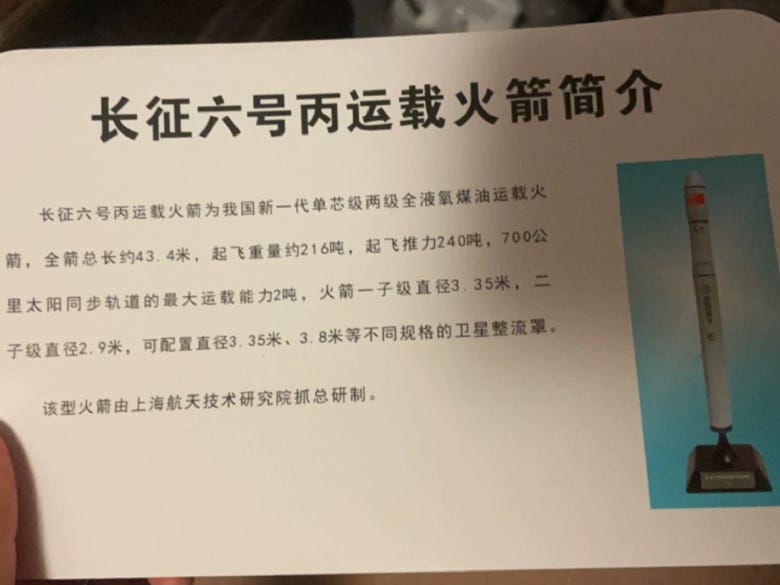Predictions for the Long March 6C and 12
This post was originally published on Ko-fi on the 26th of February 2024.
With the release of the 'blue paper' by China Aerospace Science and Technology Corporation, or CASC, more information was released about both the Long March 6C and Long March 12. Both of which should debut this year if all goes according to current plans.
Long March 6C
The Long March 6C is the vehicle we know the most about of the two due to its heritage with the Long March 6 and 6A, and due to a handout given recently. (pictured below)
The text on the handout reads as follows:
"Introduction to the Long March 6C carrier rocket
The Long March 6C launch vehicle is my country's new generation of single-core, two-stage, all-liquid oxygen and kerosene launch vehicle. The total length of the rocket is about 43.4 meters, the take-off weight is about 216 tons, the take-off thrust is 240 tons, and the maximum carrying capacity of the 700-kilometer sun-synchronous orbit is 2 tons, the diameter of the first sub-stage of the rocket is 3.35 meters, and the diameter of the second sub-stage is 2.9 meters. It can be configured with satellite fairings of different specifications such as 3.35 meters and 3.8 meters in diameter. This type of rocket is developed by the Shanghai Aerospace Technology Research Institute."
Using the information shared here it is likely that the Long March 6C is powered by two YF-100 engines, which generated 122 tons of thrust each so it does achieve the stated thrust. Based on the heritage of the Long March 6 and 6A, it is likely that the Long March 6C will use a YF-115 engine on its second stage to achieve orbit. The third stage that's on the Long March 6 may also be used for the 6C too, likely for fine-tuning the orbit ahead of payload deployment.
As of writing the Long March 6C will be used for sun-synchronous missions and be able to send up to 2,400 kilograms to a 500-kilometer sun-synchronous orbit, or 2,000 kilograms to a 700-kilogram sun-synchronous orbit.
Long March 12
The Long March 12 has much less information surrounding the vehicle despite the China Aerospace Science and Technology Corporation releasing more information on it today. The rocket is believed to be 3.8 meters in diameter and has two stages. The launch vehicles believed payload capacity is 10,000 kilograms to a low Earth orbit or 6,000 kilograms to a 700-kilometer sun-synchronous orbit. It is also believed the rocket will have two fairing options, with the diameters being either 4.2 meters or 5.2 meters.
The Long March 12 is believed to use four engines on the first stage which will generate approximately 127 tons of thrust each for a combined thrust of 508 tons, this leads me to believe the first stage engines are the first of a batch of upgraded and uprated YF-100 engines. Due to rumors of potentially first-stage re-use, these may be YF-100K engines.
The second stage is believed to use two engines generating approximately 18 tons of thrust each for a combined 36 tons of thrust. These are likely two YF-115 engines again due to China's desire to switch away from the fuels used in the Long March 2, Long March 3, and Long March 4.
But why these engines?
China and its state-owned space companies want to build as much flight time and heritage with the YF-100 engine series as possible ahead of its crewed Moon mission atop of the Long March 10. Having as much in-flight data as possible with these engines helps significantly with test flights of the Long March 10 and increasing its flight rate.
The YF-115 was likely chosen for the Long March 6C and 12 due to its pre-existing successful firings in flight as well as its impressive performance for a rocket-grade kerosene and liquid oxygen burning engine.
TLDR: The Long March 6C will use two YF-100 engines and one YF-115. The Long March 12 will use four YF-100 or YF-100K engines and two YF-115s.




